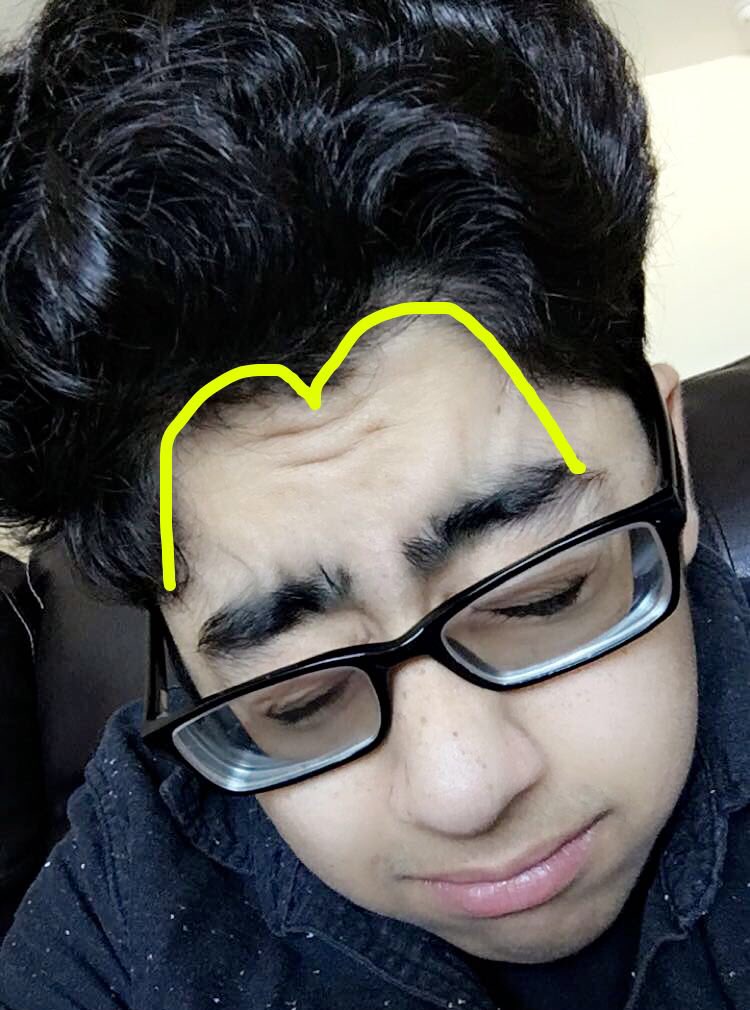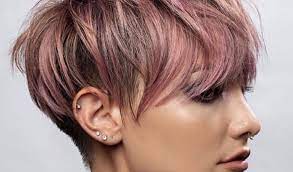
McDonald’s hairline, more commonly referred to as widow’s peak, is an M-shaped receding pattern found among some individuals and may be genetic. It can serve as an early warning sign of hair loss.
Causes
Mcdonald’s hairline or widow’s peak is an affliction that affects both men and women of all ages, often when hair recedes into an “M”-shape on the temples of the scalp, causing visible dip and depression on the forehead. While genetics, age, or stress could all play a part in its cause, it’s essential to recognize its source so appropriate treatment options can be sought to stop further hair loss.
Genes can play a significant role in creating a McDonald’s hairline, as male pattern baldness often runs in families and can be passed from generation to generation. With age comes increased hair loss around the crown and sides of one’s head, which may result in an increasingly distinct McDonald’s hairline.
Stress can also contribute to receding McDonald’s hairlines by leading to hair follicles entering a resting phase and an excess production of DHT that causes hairlines to recede.
Treatments
Mcdonald’s hairlines can be reversed through various treatments, including eating healthily and using tools like derma rollers or minoxidil to encourage new hair growth. Hair transplant surgery could also provide solutions if appearance concerns are an issue.
hair transplant surgery involves moving hair from the back of your scalp to bald areas on your head to restore McDonald’s hairlines, making them even again and helping restore an existing one. Men and women of all ages may benefit from hair transplant procedures, especially those looking to prevent future instances of this phenomenon from appearing.
Symptoms
The McDonald’s hairline, also referred to as widow’s peak, is a pattern of receding hair that forms an “M” shape at temples. This condition is common and affects both men and women; most cases can be genetic. Seeking treatment early is also imperative as it often leads to male pattern baldness in its later stages.
Prevention
Prevention of McDonald’s hairline can be achieved with good shampoo and conditioner, eliminating dandruff, and maintaining healthy hair conditions. Furthermore, smoking and excessive caffeine should be avoided since both contribute to hair loss. Stress relief through regular physical activity or dietary habits is another crucial aspect in avoiding its symptoms.
Treatments
Various treatments are available to address the McDonald’s hairline, such as scalp micropigmentation, hair transplant surgery, and platelet-rich plasma (PRP) therapy. These methods stimulate new hair growth while preventing further thinning, with minimal side effects or irritation at injection sites.
Note that male pattern baldness cannot be reversed, although treatments such as minoxidil may slow its progress. This medication works by inhibiting dihydrotestosterone production, which contributes to baldness. Finasteride may also prove effective for certain men but may cause unwanted side effects, so it is wise to consult a doctor before beginning this regimen.
Treatments
McDonald’s Hairlines don’t threaten your health, but they indicate a faster rate of hair loss that needs to be addressed as soon as possible. You have several treatment options to slow this loss and stimulate new hair growth, including using routines like Scandinavian Biolabs Hair Growth Routine, medications like minoxidil and finasteride, and non-surgical procedures like PRP therapy. However, before beginning any such regimen, it is advisable to speak to a healthcare professional to identify its cause.
Prevention
McDonald’s hairline can be reversed, and many have successfully restored their original M-shaped style. Maintaining a healthy diet and hair care routine are two effective remedies to prevent further loss of volume in hairlines. Platelet-rich plasma treatment also stimulates natural healing processes to foster new hair follicle growth.

